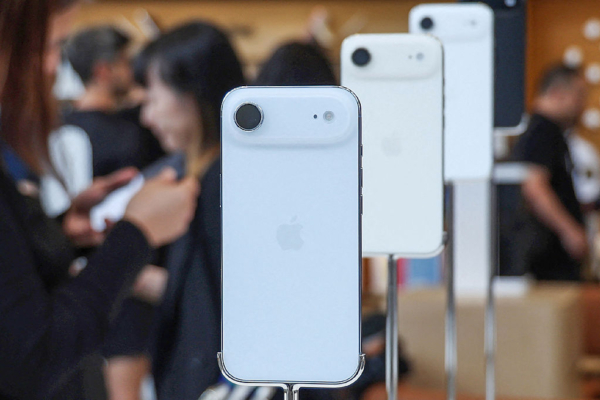Apple’s iPhone Air, launched in September this year, represents a significant redesign in the appearance of the tech giant’s smartphones, focusing on a slim and lightweight design. However, its sales performance has fallen short of expectations, as consumers tend to lean towards models with better value for money and superior specifications.
According to sales data, the price of the iPhone Air is relatively high, and in order to achieve a slim thickness of 5.64mm, some sacrifices or downgrades were made in the camera and speaker functions, which has led consumers to prefer other models.
The sales of other models in the iPhone 17 series, released simultaneously with the iPhone Air, have performed well. Apple predicts that it will achieve record sales in the holiday quarter, far exceeding Wall Street’s expectations.
In the past year (up to September of this year), the iPhone generated approximately $2.09 billion in revenue, accounting for half of Apple’s total sales. However, the sales growth of the iPhone has been slowing in recent years, prompting Apple to seek new ways to boost sales.
Nabila Popal, Research Director of the Global Tracking Team at the International Data Corporation (IDC), stated, “Apple had higher expectations for the iPhone Air, but its actual performance fell short of expectations.” The company found that sales of the iPhone Air reached only one-third of the initial highest expectations a few weeks after its launch, prompting the company to cut production plans in half.
Morgan Stanley analysts estimate that Apple will produce 90 million units of the iPhone 17 series in the second half of 2025, an increase of 6 million units from the original expectations, to offset the weak sales performance of the iPhone Air.
Upon its initial launch, the iPhone Air successfully attracted a large number of consumers’ attention.
According to data from the web information platform Similarweb, the Air product page attracted 1 million views in September, bringing the overall online views of iPhones to 7.4 million this year, a 28% increase compared to the same period last year.
However, Similarweb found that the conversion rate of the iPhone Air is about one-third lower than that of other models.
Dan Newman, CEO of The Futurum Group, remarked, “This product did attract attention… indicating that Apple’s innovation still exists.” “But for many, the Pro models offer superior camera functions and battery life, making the Air less appealing in comparison.”
Analysts from the global market intelligence company Forrester stated that the price of the iPhone Air is too close to the high-end model of the iPhone 17, and much more expensive than the entry-level model, resulting in low consumer interest.
The iPhone Air is priced at $999, only $100 cheaper than the iPhone Pro. The entry-level iPhone 17 is priced at $799.
To achieve the slim design of the Air, Apple reduced the dual speakers to a single speaker and used a rear camera that does not have ultra-wide or telephoto capabilities.
Apple stated that despite the smaller battery size of the Air, its battery life can last an entire day. The company also introduced optional removable battery packs.
(this article was referenced from a report by the Financial Times)

